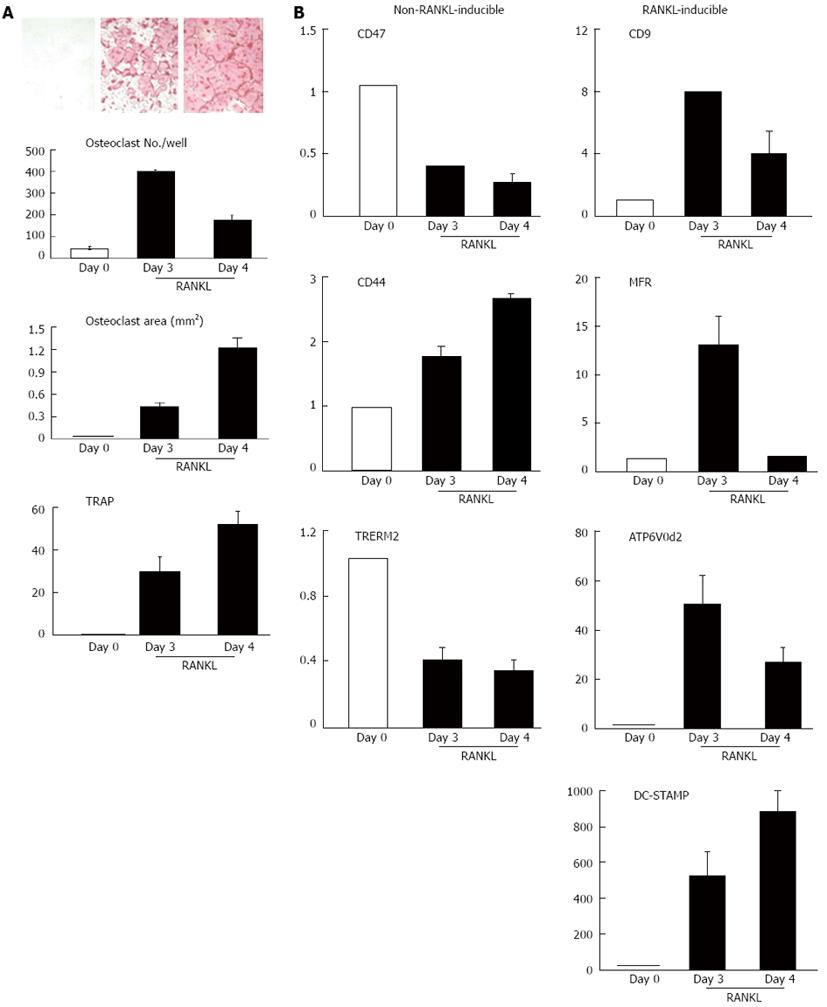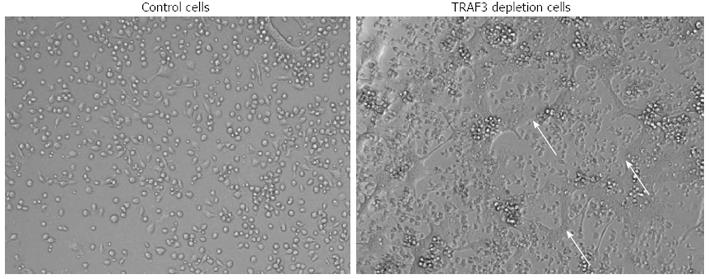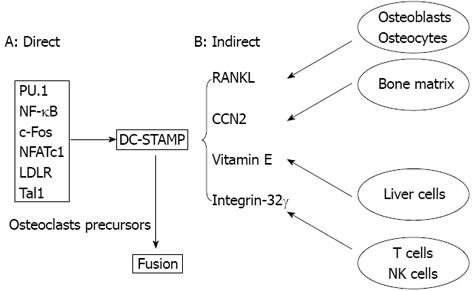Copyright
©2012 Baishideng Publishing Group Co.
World J Orthop. Dec 18, 2012; 3(12): 212-222
Published online Dec 18, 2012. doi: 10.5312/wjo.v3.i12.212
Published online Dec 18, 2012. doi: 10.5312/wjo.v3.i12.212
Figure 1 Receptor activator of NF-κB ligand increases the expression of a set of fusion genes in osteoclasts derived from WT bone marrow cells.
Bone marrow mono-nuclear cells were cultured with macrophage colony-stimulating factor for 2 d and were then treated with Receptor activator of NF-κB ligand (RANKL) for additional 3 or 4 d. Cells were harvested at day 0 (before RANKL), day 3 and day 4 after RANKL treatment. A: Tartrate-resistant acid phosphatase (TRAP) staining, osteoclast number and area, and TRAP mRNA expression; B: The expression levels of fusion genes by quantitative polymerase chain reaction. The values are the fold increase vs the value on Day 0 as 1. MFR: Macrophage fusion receptor; DC-STAMP: Dendritic cell-specific transmembrane protein
Figure 2 Increased osteoclast fusion in cells from TRAF3f/f; CSK-Cre mice.
Bone marrow mono-nuclear cells from control mice (TRAF3f/f) and TRAF3f/f; CSK-Cre mice were cultured with M-CSF for 2 d and then treated with RANKL for additional 2 d. Photos show multi-nuclear mature osteoclasts (arrows) in cells from TRAF3f/f; CSK-Cre mice. TNF: Tumor necrosis factor; TRAF: TNF receptor-associated factors; M-CSF: Macrophage colony-stimulating factor.
Figure 3 Osteoclast fusion is regulated by various factors mainly through dendritic cell-specific transmembrane protein.
A: In osteoclast precursors, factors including transcription factors essential for osteoclastogenesis control DC-STAMP expression, which regulates osteoclast fusion directly; B: Various cell types produce soluble factors that affect DC-STAMP expression in osteoclast precursors, which regulates osteoclast fusion indirectly. DC-STAMP: Dendritic cell-specific transmembrane protein.
- Citation: Xing L, Xiu Y, Boyce BF. Osteoclast fusion and regulation by RANKL-dependent and independent factors. World J Orthop 2012; 3(12): 212-222
- URL: https://www.wjgnet.com/2218-5836/full/v3/i12/212.htm
- DOI: https://dx.doi.org/10.5312/wjo.v3.i12.212











